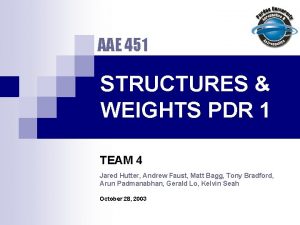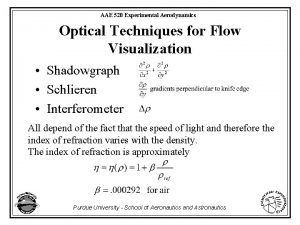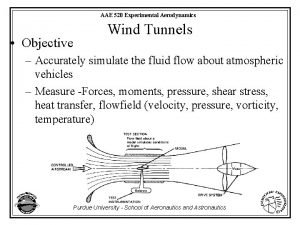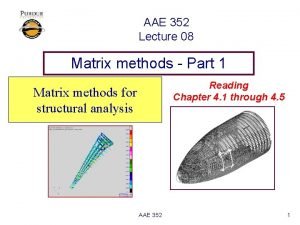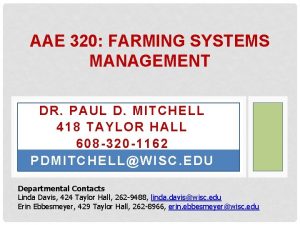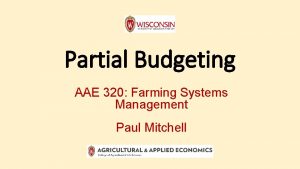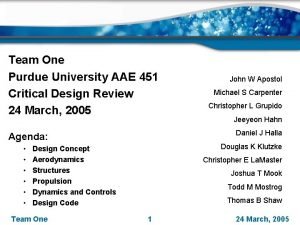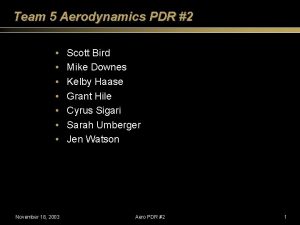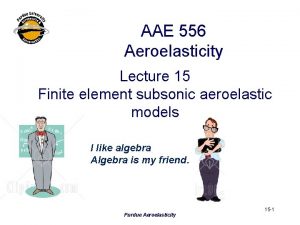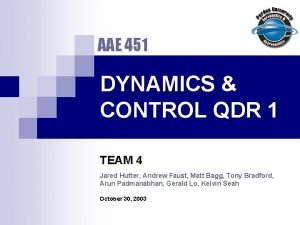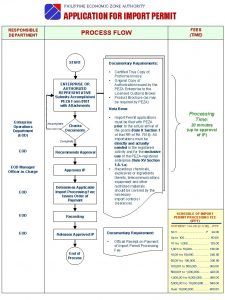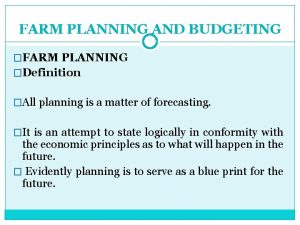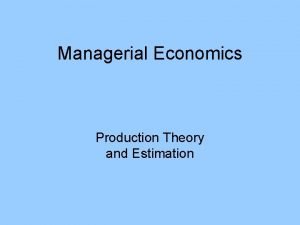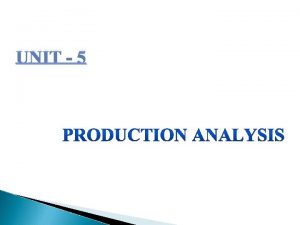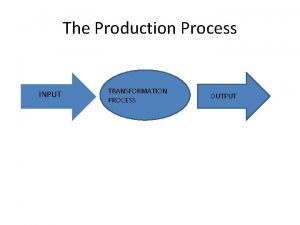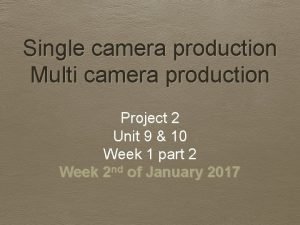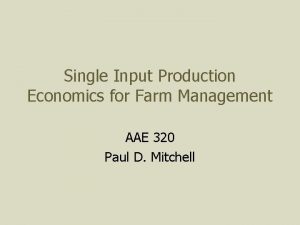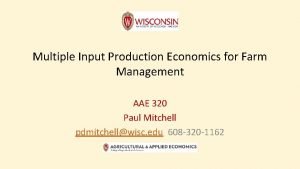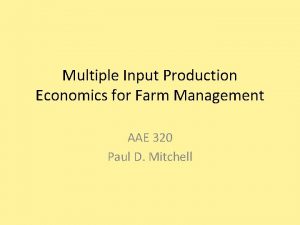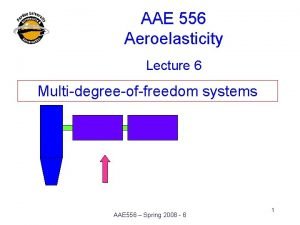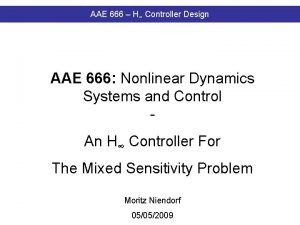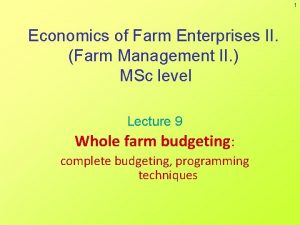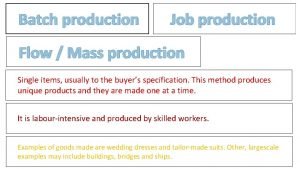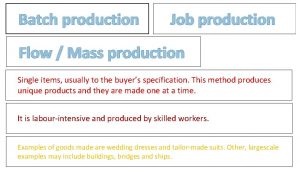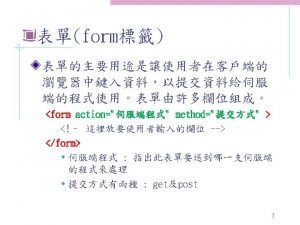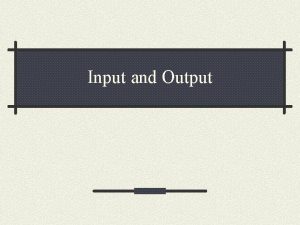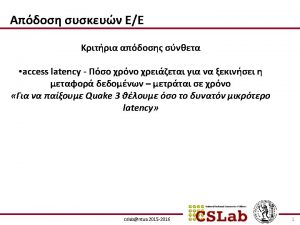Single Input Production Economics for Farm Management AAE












































- Slides: 44

Single Input Production Economics for Farm Management AAE 320: Farming Systems Management Paul Mitchell pdmitchell@wisc. edu 608 -320 -1162

Production Economics Learning Goals n n n Single and Multiple Input Production Functions n What are they and how to use them in production economics and farm management Economics to identify optimal input and output combinations n How much nitrogen fertilizer do I use for my corn? n How much corn will I get if I use this much nitrogen? Application of basic production economics to farm management

Production n n Definition: Using inputs to create goods and services having value to consumers or other producers Production is what farms do! Using land, labor, time, machinery, animals, seeds, fertilizer, water, etc. to grow crops, livestock, milk, eggs, etc. Can further process outputs: cheese, jams/jellies, baked goods Can produce services: bed and breakfast, orchard/pumpkin farm with hayrides selling the “fall country experience”

Production Function n n Production Function: gives the maximum amount of output that can be produced for the given input(s) Generally two types: n n Tabular Form (Production Schedule) Mathematical Function

Milk (lbs/yr) 0 800 1, 700 3, 000 5, 000 8, 500 11, 700 14, 600 17, 200 19, 400 21, 000 22, 600 22, 800 22, 900 Tabular Form A table listing the maximum output for each given input level TDN = total digestible nutrition (feed) Mikl Production (lbs/yr) Feed (1000 lbs TDN/yr) 0 1 2 3 4 5 6 7 8 9 10 11 12 13 14 25, 000 20, 000 15, 000 10, 000 5, 000 0 0 2 4 6 8 10 Feed (1, 000 lbs TDN) 12 14

Production Function n n Mathematically express the relationship between input(s) and output Single Input, Single Output n n n Milk = f(TDN) Milk = 50 + 3 TDN – 0. 2 TDN 2 Multiple Input, Single Output n n Milk = f(Corn, Soy) Milk = 50 + 3 Corn – 0. 2 Corn 2 + 2 Soy – 0. 1 Soy 2 + 0. 4 Corn. Soy

Examples n Polynomial: Linear, Quadratic, Cubic n n n Milk = b 0 + b 1 TDN + b 2 TDN 2 Milk = – 2261 + 2. 535 TDN – 0. 000062 TDN 2 Many functions are used, depending on the process: Cobb-Douglas, von Liebig (plateau), Exponential, Hyperbolic, etc.

Why Production Functions? n n n More convenient & easier to use than tables Estimate via regression with the tables of data from experiments Increased understanding of production process: identify important factors and how important factor each is Allows use of calculus for optimization Common activity of agricultural research scientists

Definitions n n Input: X Output: Q Total Product = Output Q Average Product (AP) = Q/X: average output for each unit of the input used n Example: you harvest 200 bu/ac corn and applied 100 lbs of nitrogen n AP = 200/100 = 2, means on average, you got 2 bu of corn per pound of nitrogen applied Graphics: slope of line between origin and the total product curve

Definitions n n Marginal Product (MP) = DQ/DX or derivative d. Q/d. X: n Output Q generated by the last unit of input used or applied n Example: corn yield increases from 199 to 200 bu/ac when you increase nitrogen applied from 99 lbs to 100 lbs n MP = 1/1 = 1, meaning you got 1 bu of corn from last 1 pound of nitrogen applied MP: Slope of total product curve

Graphics Output Q 1 Q 2 Input X MP AP 3 1) MP = 0 when Q at maximum, i. e. slope = 0 2) AP = MP when AP at maximum, at Q where line btwn origin and Q curve tangent 3) MP > AP when AP increasing 4 AP Input X MP 4) AP > MP when AP decreasing

MP and AP: Tabular Form Input TP MP AP MP = DQ/DX = (Q 2 – Q 1)/(X 2 – X 1) 6 6. 0 AP = Q/X 2 16 10 8. 0 3 29 13 9. 7 4 44 15 11. 0 5 55 11 11. 0 MP: 5 = (60 – 55)/(6 – 5) 6 60 5 10. 0 AP: 8. 9 = 62/7 7 62 2 8. 9 8 62 0 7. 8 9 61 -1 6. 8 10 59 -2 5. 9 0 0 1 6 MP: 6 = (6 – 0)/(1 – 0) AP: 8. 0 = 16/2

Same Data: Graphically

Think Break #2 Nitrogen (N) and Corn Yield n Fill in the missing numbers in the table for the Average Product (AP) and the Marginal Product (MP) n Remember the Formulas MP = DQ/DX = (Q 2 – Q 1)/(X 2 – X 1) AP = Q/X N Yield 0 30 25 45 50 75 75 100 125 150 175 200 225 105 135 150 165 168 170 171 AP MP --1. 8 --0. 6 1. 2 1. 4 1. 35 1. 1 0. 96 0. 85 0. 76 1. 2 0. 6 0. 12 0. 08 0. 04

Law of Diminishing Marginal Product n Diminishing MP: Holding all other inputs fixed, as you use more and more of one input, eventually the MP starts decreasing n n The returns to increasing that input eventually start to decrease Common in biological, physical and social systems: eventually the marginal product (MP) starts to decrease n n As you make more and more feed available to a cow, the extra milk produced eventually starts to decrease As add more corn acres (holding all other inputs fixed), the extra corn produced eventually decreases due to less time to plant and for crop care, more time travel between fields, only lower quality land available, …

Transition n n n We spent time explaining production functions Q = f(X) and their slope = MP, and AP = Q/X Now we can ask: How do we use them? How do I decide how much input to use? n How much nitrogen should I use for my corn? n How many soybean seeds should I plant per acre? Choose each input to maximize farmer profit We will set it up as an economic problem First as partial budget and then use calculus

Suppose you apply 99 pounds of Nitrogen per acre to corn. Should you apply 100 pounds? Benefits Costs Additional Revenues Additional Costs Extra yield = 180 bu – 179 bu $0. 50/lb x 1 lb of N/acre = = 1 bu/acre x $3. 00/bu = $0. 50/acre (Input price) $3. 00/acre (Value of the MP) Costs Reduced None Total Benefits Revenues Reduced None $3. 00/ac Total Costs $0. 50/acre Total Benefits – Total Costs = Net Gain $2. 50/acre Assumptions • Corn Price $3. 00/bu • N price $0. 50/lb

Partial budget analysis for each addition of N fertilizer n Do I add 25 more lbs of N fertilizer? n Corn price = $2. 50/bu n N price = $0. 30/lb N lbs/ac 0 Yield bu/ac 30 25 50 75 100 125 150 175 200 225 45 75 105 135 150 165 168 170 171 $2. 50 x DQ $0. 30 x DN Benefit of Extra N Cost of Extra N --$37. 50 $75. 00 $37. 50 $7. 50 $5. 00 $2. 50 --$7. 50 $7. 50 • What if you only wanted to add one more pound of N? • Let’s divide the Benefit and Cost by the DN of 25 pounds • Gives the net gain for 1 extra pound of N

$2. 50 x DQ DQ/DN $2. 50 x DQ/DN $0. 30 x DN N 0 25 50 75 100 125 150 175 200 225 Benefit of Yield Extra N 30 --45 75 105 135 150 165 168 170 171 $37. 50 $75. 00 $37. 50 $7. 50 $5. 00 $2. 50 $0. 30 x DN/DN MP Benefit of 1 extra lb of N Cost of Extra N Cost of 1 extra lb of N --0. 6 1. 2 0. 6 0. 12 0. 08 0. 04 --$1. 50 $3. 00 $1. 50 $0. 30 $0. 02 $0. 01 --$7. 50 $7. 50 --$0. 30 $0. 30

Graphics Yield MP 180 1. 4 160 1. 2 140 1 120 100 0. 8 80 0. 6 60 0. 4 40 20 0. 2 0 0 0 50 100 150 200 250

Intuition n n If you take a partial budget analysis and divide by DX (the change in X in the table), you convert it to a partial budget analysis of a 1 unit change in the input X The Benefit will be the Marginal Product times the output price, or the Value of the Marginal Product (VMP) The Cost will be the cost of 1 unit of X, the Input Price How much X to use? Where the VMP = Input Price is the “break even” X if you did a partial budget analysis n Keep increasing X until the gain the last bit of input generates just equals the cost of buying the last bit of input

X Feed 0 1 2 3 4 5 6 7 8 9 10 11 12 13 14 Q Milk 0 800 1, 700 3, 000 5, 000 8, 500 11, 700 14, 600 17, 200 19, 400 21, 000 22, 600 22, 800 22, 900 Milk Cow Feed Example MP 800 900 1300 2000 3500 3200 2900 2600 2200 1600 1000 600 200 100 r VMP Feed Price $180 $144 $180 $162 $180 $234 $180 $360 $180 $630 $180 $576 $180 $522 $180 $468 $180 $396 $180 $288 $180 $108 $180 $36 $180 p profit -$400 -$436 -$454 -$400 -$220 $230 $626 $968 $1, 256 $1, 472 $1, 580 $1, 508 $1, 364 $1, 202 Milk Price = $18/cwt or p = $0. 18/lb Feed Price = $180 for 1, 000 lbs Fixed Cost = $400/yr Price Ratio r/p = $180/$0. 18 = 1, 000 VMP = r at Feed = 11 Optimal Feed = 11 MP = r/p = 1, 000

Mikl Production (lbs/yr) 25, 000 r/p 20, 000 • Profit Max occurs where VMP = r 15, 000 10, 000 5, 000 0 0 2 4 6 8 Feed (1, 000 lbs TDN) 10 12 14 4, 000 • r/p = 180/0. 18 = 1, 000 3, 500 Marginal Product • Where line with slope of r/p = MP, or is tangent to the production function 3, 000 2, 500 • Where MP = r/p line 2, 000 1, 500 r/p 1, 000 500 0 0 2 4 6 8 Feed (1, 000 lbs TDN) 10 12 14

Another Way to Find Optimal Input Use n n n n Have derived the profit maximizing condition defining optimal input use p x MP = r or VMP = r Rearrange this condition to get an alternative: MP = r/p Find the amount of X where the MP equals r/p is the “Relative Price” of input X, how much X is worth in the market relative to Q r is $ per unit of X, p is $ per unit of Q Ratio r/p is units of Q per one unit of X r/p is how much Q you could buy if you traded in one unit of X r/p is the cost of X if you were buying X in the market using Q in trade

MP = r/p and Cow Feed n n r = $/ton of TDN (Feed), p = $/cwt of milk, so r/p = ($/ton)/($/cwt) = cwt/ton, or the hundredweight of milk you could buy if you “traded in” one ton of feed MP = cwt of milk from the last ton of feed MP = r/p means to find the amount of Feed that gives the same conversion between Feed and milk in the production process as in the market, or find the Feed amount that sets the Marginal Benefit of Feed = Marginal Cost of Feed

Milk Cow Feed Example: Key Points n n Profit maximizing Feed is less than output maximizing Feed, which implies profit maximization ≠ output maximization Profit maximizing Feed occurs at Feed levels where MP is decreasing, meaning that you use Feed where it has a diminishing MP Profit maximizing Feed depends on both the Feed price and the milk price Profit maximizing Feed same whether use VMP = r or MP = r/p to identify optimal Feed

Think Break #3 n n Fill in the VMP column in the table using $3/bu for the corn price. What is the profit maximizing N fertilizer rate if the N fertilizer price is $0. 5/lb? N lbs/A Yield bu/A MP VMP 0 25 30 45 --0. 6 --- 50 75 100 125 150 175 200 225 75 105 135 150 165 168 170 171 1. 2 0. 6 0. 12 0. 08 0. 04

Why We Need Calculus n n n What do you do if the VMP = r is not in the table? If you have the production function Q = f(X), then you can use calculus to derive an equation for the MP = f’(X) With an equation for MP, you can “fill in the gaps” in the tabular form of the production schedule

Calculus and AAE 320 n n n I will keep the calculus simple!!! Production Functions will be Quadratic Equations: Q = f(X) = a + b. X + c. X 2 First derivative = slope of production function = Marginal Product 3 different notations for derivatives dy/dx (Newton), f′(x) and fx(x) (Leibniz) 2 nd derivatives: d 2 y/dx 2, f′’(x), fxx (x)

Quick Review of Derivatives n Constant Function n Power Function n n If Q = f(X) = K, then f’(X) = 0 Q = f(X) = 7, then f’(X) = 0 If Q = f(X) = a. Xb, then f’(X) = ab. Xb-1 Q = f(X) = 7 X 1, then f’(X) = 7(1)X 1 -1 = 7 Q = f(X) = 3 X 2, then f’(X) = 3(2)X 2 -1 = 6 X Sum of Functions n n Q = f(X) + g(X), then d. Q/d. X = f’(X) + g’(X) Q = 3 + 5 X – 0. 1 X 2, d. Q/d. X = 0 + 5 – 0. 2 X

Think Break #4 n What are the 1 st and 2 nd derivatives with respect to X of the following functions? 1. Q(X) = 4 + 15 X – 7 X 2 2. p(X) = 2(5 – X – 3 X 2) – 8 X – 15

Calculus-Based Approach to Optimal Input Use Mathematical Model: Profit = Revenue – Cost Profit = price x output – input cost – fixed cost p = p. Q – r. X – K = pf(X) – r. X – K p = profit Q = output X = input f(X) = production function p = output price r = input price K = fixed cost n Learn this model, we will use it a lot!!!

Calculus-Based Approach to Optimal Input Use n n n Find X to Maximize profit p(X) = pf(X) – r. X – K Calculus: Set first derivative of p with respect to X equal to 0 and solve for X, the “First Order Condition” (FOC) FOC: pf’(X) – r = 0 p x MP – r = 0 Rearrange: pf’(X) = r p x MP is the “Value of the Marginal Product” (VMP), what would get if sold the MP FOC means to increase use of the input X until p x MP = r, or until the VMP = r, the input price

Calculus of Optimization n n n Problem: Choose X to Maximize some function g(X) First Order Condition (FOC): Set g’(X) = 0 and solve for X May be more than one X (not in this class) Call these potential solutions X* Identifying X values where the slope of the objective function is zero (satisfies the FOC) Use SOC to see if at maximum or minimum

Calculus of Optimization n n n Second Order Condition (SOC) Evaluate g’’(X) at each X* identified Condition for a maximum is g’’(X*) < 0 Condition for a minimum is g’’(X*) > 0 g’’(X) is the function's curvature at X Positive curvature is convex (minimum) Negative curvature is concave (maximum)

Calculus of Optimization: Intuition n n FOC: finding the X values where the objective function's slope is zero, candidates for minimum/maximum SOC: checks curvature at each candidate solution identified by setting FOC equal to zero Maximum is curved down (2 nd derivative negative) Minimum is curved up (2 nd derivative positive)

Example 1 n n n n Choose X to maximize g(X) = – 5 + 6 X – X 2 FOC: g’(X) = 6 – 2 X = 0 FOC satisfied when X = 3 Is this a maximum or a minimum or an inflection point? How do you know? Check the SOC: g’’(X) = – 2 < 0 Negative, satisfies SOC for a maximum The value of g(X) at X = 3: g(3) = – 5 + 6(3) – 3 2 = 4

Example 1: Graphics Slope = 0 8 g’(X) = 0 6 g(X) and g'(X) 4 2 g(X) 0 0 1 2 3 -2 -4 -6 -8 Input X 4 5 6 g'(X)

Example 2 n n n n Choose X to maximize g(X) = 10 – 6 X + X 2 FOC: g’(X) = – 6 + 2 X = 0 FOC satisfied when X = 3 Is this a maximum or a minimum or an inflection point? How do you know? Check the SOC: g’’(X) = 2 > 0 Positive, does not satisfy SOC for maximum The value of g(X) at X = 3: g(3) = 10 – 6(3) + 3 2 = 1

Example 2: Graphics What value of X maximizes this function? Slope = 0 12 10 8 g’(X) = 0 g(X) and g'(X) 6 4 g(X) 2 g'(X) 0 -2 0 1 2 3 -4 -6 -8 Input X 4 5 6

Think Break #5 Choose X to Maximize: p(X) = 10(30 + 5 X – 0. 4 X 2) – 2 X – 18 1) What X satisfies the FOC? 2) Does this X satisfy the SOC for a maximum? 3) What is p(X) at this X?

Calculus and Production Economics n n In general, p(X) = pf(X) – r. X – K Suppose your production function is Q = f(X) = 30 + 5 X – 0. 4 X 2 Suppose output price is 10, input price is 2, and fixed cost is 18, then p = 10(30 + 5 X – 0. 4 X 2) – 2 X – 18 To find X to maximize p, solve the FOC and check the SOC, can then calculate output and profit

Calculus and Production Economics p = 10(30 + 5 X – 0. 4 X 2) – 2 X – 18 n FOC: 10(5 – 0. 8 X) – 2 = 0 10(5 – 0. 8 X) = 2 p x MP = r 5 – 0. 8 X = 2/10 MP = r/p When solving the FOC, you set VMP = r and/or MP = r/p & solve for X n n n n Solve for X = 6, check SOC, confirm that it is a maximum Plug 6 back into the profit function to calculate output Q and then profit p Q(X) = 30 + 5 X – 0. 4 X 2 Q(6) = 45. 6 p(X) = 10(Q) – 2 X – 18 p(6) = 10(45. 6) – 30 = 426

Summary: Single Input Production Function n n Condition to find optimal input use: VMP = r or MP = r/p What does this condition mean? What does it look like graphically? Know how to use condition to find optimal input use and corresponding output and profit n 1) With a production schedule (table) n 2) With a production function (calculus)
 Diagram alir proses produksi adalah
Diagram alir proses produksi adalah Aae 508 purdue
Aae 508 purdue Aae 320
Aae 320 Aae 520
Aae 520 Aae 520
Aae 520 Aerodynamics
Aerodynamics Aae design
Aae design Aae 352
Aae 352 Aae 320 uw madison
Aae 320 uw madison Aae 320
Aae 320 Aae 251 purdue
Aae 251 purdue Aae 451
Aae 451 Aae glass tutorial
Aae glass tutorial Aae 421
Aae 421 Purdue aae 590
Purdue aae 590 Aae 421
Aae 421 Form 8105 peza
Form 8105 peza Partial budgeting and complete budgeting
Partial budgeting and complete budgeting Uses of farm structures and buildings
Uses of farm structures and buildings Who does mollie represent in animal farm
Who does mollie represent in animal farm What is fpac
What is fpac Economics and business economics maastricht
Economics and business economics maastricht Non mathematical economics
Non mathematical economics Production theory and estimation
Production theory and estimation A fixed input
A fixed input Is the human input into the production process
Is the human input into the production process Peripheral output adalah...
Peripheral output adalah... Roughly-tuned input definition
Roughly-tuned input definition Single camera production films
Single camera production films Multi strand narrative
Multi strand narrative Pe single wall corrugated pipe production line
Pe single wall corrugated pipe production line Single instruction single data
Single instruction single data Single instruction single data
Single instruction single data Waiting line management
Waiting line management Fspos
Fspos Typiska novell drag
Typiska novell drag Nationell inriktning för artificiell intelligens
Nationell inriktning för artificiell intelligens Vad står k.r.å.k.a.n för
Vad står k.r.å.k.a.n för Varför kallas perioden 1918-1939 för mellankrigstiden
Varför kallas perioden 1918-1939 för mellankrigstiden En lathund för arbete med kontinuitetshantering
En lathund för arbete med kontinuitetshantering Personalliggare bygg undantag
Personalliggare bygg undantag Personlig tidbok för yrkesförare
Personlig tidbok för yrkesförare Anatomi organ reproduksi
Anatomi organ reproduksi Densitet vatten
Densitet vatten Datorkunskap för nybörjare
Datorkunskap för nybörjare

